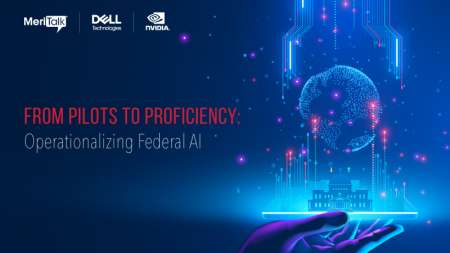
To embrace the opportunities of AI, the Department of Defense (DoD) says it needs to “adopt responsible behavior, processes, and outcomes in a manner that reflects the department’s commitment to its ethical principles, including the protection of privacy and civil liberties.”

Explaining why the Pentagon needs to embrace RAI, Hicks said, “a trusted ecosystem not only enhances our military capabilities, but also builds confidence with end-users, warfighters, and the American public. By leading in military ethics and AI safety, we reflect our Nation’s values, encourage [RAI] development globally, and strengthen partnerships around the world.”
In the memo, Hicks reaffirmed the DoD’s Ethical AI Principles, adopted by the Pentagon in February of last year, for the design, development, deployment, and use of Al capabilities. The principles are ensuring that the use of AI is responsible, ethical, traceable, reliable, and governable.
Hicks said the principles apply to all DoD AI capabilities regardless of size, Hicks specifically mentions the department’s AI-enabled autonomous systems, for warfighting and business applications. Hicks adds that to ensure the country’s values are embedded in the Pentagon’s AI capabilities the principles have to be implemented in technology, enterprise operating structures, and organizational culture.
The memo establishes six foundational tenets that the department will use when implementing RAI:
- “RAI Governance: Ensure disciplined governance structure and processes at the Component and DoD-wide levels for oversight and accountability and clearly articulate DoD guidelines and policies on RAI and associated incentives to accelerate adoption of RAI within the DoD.
- Warfighter Trust: Ensure warfighter trust by providing education and training, establishing a test and evaluation and verification and validation framework that integrates real-time monitoring, algorithm confidence metrics, and user feedback to ensure trusted and trustworthy Al capabilities.
- Al Product and Acquisition Lifecycle: Develop tools, policies, processes, systems, and guidance to synchronize enterprise RAI implementation for the AI product throughout the acquisition lifecycle through a systems engineering and risk management approach.
- Requirements Validation: Incorporate RAI into all applicable AI requirements, including joint performance requirements established and approved by the Joint Requirements Oversight Council, to ensure RAI inclusion in appropriate DoD AI capabilities.
- Responsible AI Ecosystem: Build a robust national and global RAI ecosystem to improve intergovernmental, academic, industry, and stakeholder collaboration, including cooperation with allies and coalition partners, and to advance global norms grounded in shared values.
- Al Workforce: Build, Train, equip, and retain an RAI-ready workforce to ensure robust talent planning, recruitment, and capacity-building measures, including workforce education and Training on RAI.”
To accelerate the implementation of RAI, Hicks said the Joint Artificial Intelligence Center (JAIC) Director will work with the RAI Working Council to take four initial actions:
- RAI Working Council and Training: The JAIC will appoint O-6/civilian equivalent representatives to an RAI Working Council. The council will serve as an initial RAI working body to ensure input and coordination across the department. The JAIC both designate representatives to the council and provide training on the department’s RAI principles and tenants.
- RAI Strategy and Implementation Pathway: The RAI Working Council will develop a DoD RAl Strategy and Implementation Pathway with executable and practical actions based on the RAI foundational tenets listed above. The pathway will include proposed actions, with corresponding metrics, and timelines, as well as the future role of the council, while leveraging existing efforts, processes, policies, and structures for RAI integration across the department.
- RAI Workforce Talent Management: The RAI Working Council will develop a talent management framework and identify required skills to build a cadre of RAI experts and an RAI-literate workforce.
- RAI Acquisition: The RAI Working Council will provide recommendations on the integration of RAI into the AI acquisition requirements, on the process, and on any policy modifications to enable RAI considerations within existing supply chain risk management practices.
